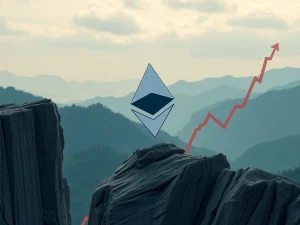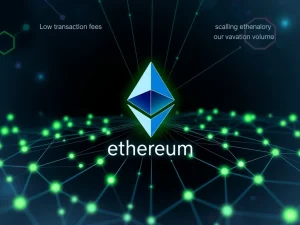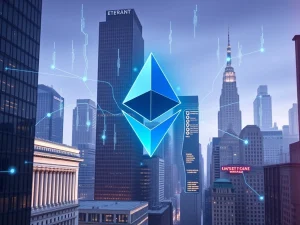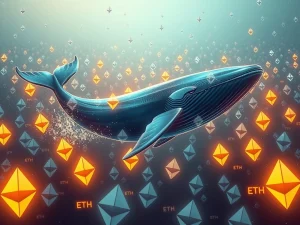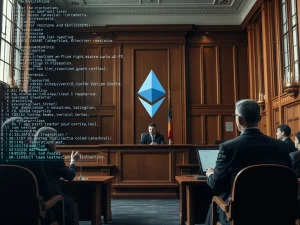SWIFT Linea Breakthrough: Joe Lubin Confirms Revolutionary Ethereum Layer 2 Integration for Global Crypto Payments System
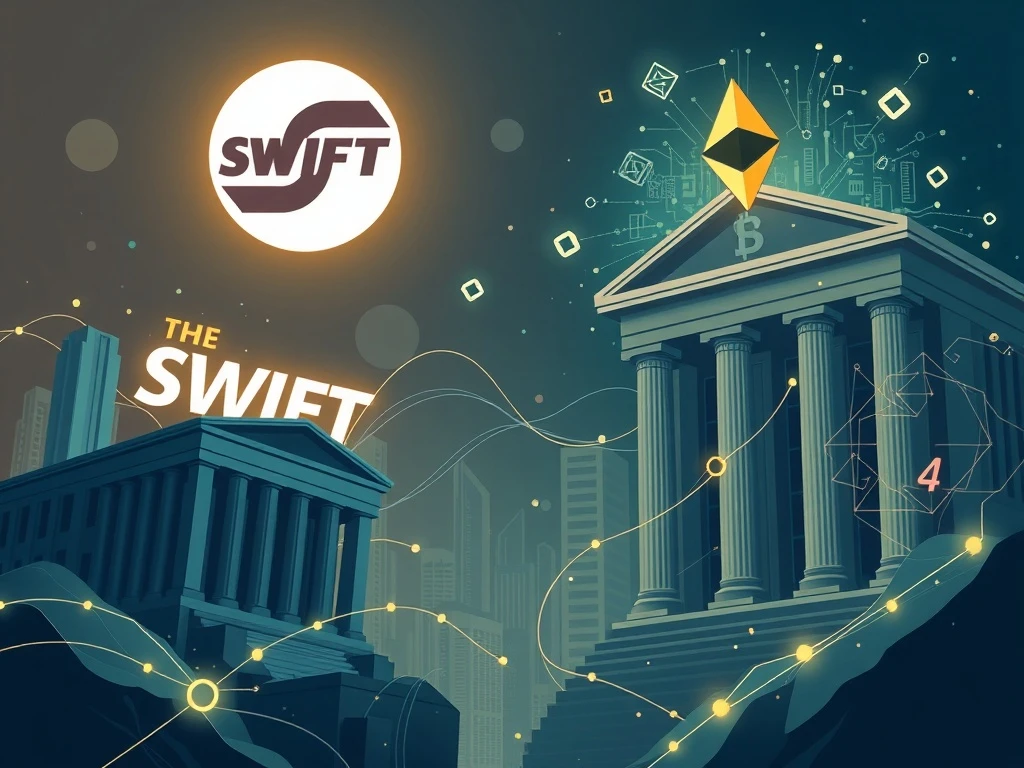
The financial world is witnessing a pivotal moment. Joe Lubin, the influential CEO of ConsenSys, recently confirmed a groundbreaking development. He announced that SWIFT, the global interbank messaging system, will utilize Linea, an Ethereum Layer 2 blockchain, to construct its new crypto payments system. This strategic move signals a significant step towards merging traditional finance (TradFi) with decentralized finance (DeFi).
This revelation came during a fireside chat at the TOKEN2049 conference in Singapore. Lubin’s confirmation follows widespread speculation. SWIFT had previously announced plans for a 24/7 real-time crypto payments system. However, they initially withheld details about the underlying blockchain technology. Now, the identity of this crucial infrastructure is clear: Linea. This decision highlights the growing confidence in blockchain solutions within established financial institutions.
The Pivotal SWIFT Linea Partnership Unveiled
The collaboration between SWIFT and Linea represents a major leap for the financial sector. SWIFT, formally known as the Society for Worldwide Interbank Financial Telecommunication, manages approximately $150 trillion in global payments annually. Its move into blockchain payments has been anticipated. This adoption of decentralized technology promises substantial benefits for global transactions.
Joe Lubin elaborated on the positive reception of SWIFT’s announcement. He noted that SWIFT CEO Javier Pérez-Tasso did not initially name Linea. Lubin described this as a “soft roll out” of “big news.” The banking sector reacted favorably, expressing gratitude for the initiative. “I believe the sentiment was, ‘thank you for doing this.’ It’s about time to bring the two streams, DeFi and TradFi, together,” Lubin stated. This sentiment underscores the readiness for such integration.
The partnership aims to address inefficiencies in traditional payment rails. Blockchain technology offers near-instant, 24/7 settlement. It also reduces costs, errors, and delays. Therefore, Linea provides a robust foundation for SWIFT’s next-generation payment platform. This integration will likely set new standards for cross-border transactions.
Understanding Linea: A Robust Ethereum Layer 2 Solution
Linea stands out as a high-performance Ethereum Layer 2 network. ConsenSys developed this scaling solution. It leverages zk-EVM rollup technology. This advanced cryptographic method bundles many transactions off-chain. It then submits a single proof to the Ethereum mainnet. This process significantly enhances throughput and reduces transaction costs.
Currently, Linea processes about 1.5 transactions per second. Its fees are roughly one-fifteenth the cost of transactions directly on Ethereum. This efficiency makes it an ideal candidate for large-scale financial applications. Linea also boasts substantial total value locked (TVL). L2BEAT data shows its TVL at $2.27 billion. This positions Linea as the fourth-largest Ethereum Layer 2. It trails only Arbitrum One, Base Chain, and OP Mainnet. Its strong performance and growing ecosystem validate its capabilities.
The choice of Linea by SWIFT underscores the maturity and reliability of Ethereum’s scaling solutions. Ethereum’s robust security and decentralized nature are attractive. However, its mainnet can suffer from congestion and high gas fees. Layer 2 solutions like Linea solve these problems. They provide the necessary scalability for enterprise-level adoption. This partnership validates the entire Ethereum ecosystem’s direction.
SWIFT’s Vision for a Modern Crypto Payments System
SWIFT’s foray into a blockchain-based crypto payments system reflects an evolving global financial landscape. Traditional banking systems, while reliable, often involve multiple intermediaries. These intermediaries can slow down transactions and increase costs. They also limit operating hours. SWIFT’s new platform aims to overcome these limitations.
The system promises real-time, 24/7 settlement. This feature is crucial for a global economy that operates around the clock. It minimizes delays, which can impact businesses and individuals. Furthermore, reducing intermediaries can lower operational costs. It also enhances transparency and security through blockchain’s immutable ledger. This represents a significant upgrade from existing methods.
This initiative also positions SWIFT as a potential competitor to existing blockchain-based payment systems. Ripple’s XRP Ledger, for instance, has long targeted banks for cross-border payments. SWIFT’s entry with Linea could offer a powerful alternative. Its extensive network and institutional backing provide a strong competitive advantage. This move signifies a clear embrace of digital assets and blockchain technology by major financial players.
Bridging TradFi DeFi: A New Era of Financial Integration
The collaboration between SWIFT and Linea is a prime example of TradFi DeFi convergence. Traditional finance institutions are increasingly exploring decentralized technologies. They seek the efficiencies and innovations offered by blockchain. Conversely, DeFi protocols gain legitimacy and broader adoption through institutional involvement. This synergy benefits both worlds.
Joe Lubin emphasized this convergence. He sees it as an inevitable and positive development. Bringing these two streams together creates new opportunities. It enables more efficient, inclusive, and transparent financial services. This integration could unlock trillions of dollars in value currently trapped in inefficient systems. It paves the way for a more interconnected global economy.
Lubin also highlighted Linea’s broader potential. He described it as a platform for a “user-generated civilization.” This vision extends beyond mere payments. It envisions a future where communities build infrastructure, rules, and applications from the bottom up. This contrasts sharply with the top-down approach of traditional institutions. Leveraging Ethereum’s trustless settlement layer, Linea empowers decentralized autonomous organizations (DAOs) and other community-driven initiatives. While DAOs face challenges in achieving scale, platforms like Linea offer the tools for their potential success.
Key Participants and Market Implications of SWIFT Linea
Several major TradFi institutions are participating in trials of SWIFT’s new blockchain payments rail on Linea. These include industry giants like Bank of America, Citi, JPMorgan Chase, and Toronto-Dominion Bank. Their involvement underscores the seriousness and potential impact of this initiative. These banks represent a significant portion of global financial activity. Their adoption could accelerate broader industry acceptance.
The market implications are profound. SWIFT’s entry could reshape the landscape of global payments. It offers a powerful alternative to traditional correspondent banking. This system often involves high costs and delays. The near-instant, 24/7 settlement capabilities of Linea provide a compelling value proposition. It could also spur further innovation in the blockchain payments space.
This development validates the long-held belief that blockchain technology will revolutionize finance. It moves beyond niche applications. It enters the mainstream of interbank settlements. This move will likely pressure other payment networks to adapt. It could also drive greater interoperability between different blockchain systems. The future of global finance looks increasingly digital and decentralized.
The Broader Impact on Ethereum and Layer 2 Ecosystems
The selection of Linea by SWIFT provides a massive endorsement for the entire Ethereum Layer 2 ecosystem. It demonstrates that these scaling solutions are robust enough for institutional-grade applications. This validates Ethereum’s long-term strategy. The network relies on Layer 2s to handle the bulk of transaction volume. It maintains the security and decentralization of the mainnet.
This partnership will likely attract more developers and projects to Linea. It will also draw attention to other Ethereum Layer 2s. These include Arbitrum, Optimism, and zkSync. Such institutional adoption can spur innovation. It can lead to further advancements in scaling technology. The increased activity strengthens the network effect for Ethereum. It cements its position as the leading smart contract platform.
Moreover, it could accelerate the development of enterprise-grade tools and infrastructure around Layer 2s. Companies will invest more in security, compliance, and user experience. This benefits all users of the Ethereum ecosystem. It brings the vision of a globally scalable, decentralized internet closer to reality. The future of finance increasingly intertwines with Ethereum’s success.
Joe Lubin’s Vision: Beyond Payments with Linea
Joe Lubin’s involvement with ConsenSys and Linea extends beyond mere payment solutions. He envisions Linea as a platform enabling a “user-generated civilization.” This concept emphasizes bottom-up community building. It empowers individuals and groups to create their own infrastructure and rules. This contrasts sharply with traditional, centralized models of governance and finance.
Decentralized autonomous organizations (DAOs) exemplify this vision. They aim to operate without centralized leadership. They use smart contracts and decentralized voting systems for management. While many DAOs still seek success at scale, platforms like Linea offer the technological foundation. They provide the necessary tools for these experiments in decentralized governance to flourish. Lubin believes this shift will foster greater innovation and inclusivity.
This broader perspective highlights the transformative potential of blockchain technology. It moves beyond financial transactions. It touches upon social and organizational structures. ConsenSys, under Lubin’s leadership, consistently pushes the boundaries of what is possible with Ethereum. Their work with Linea and SWIFT showcases a commitment to both enterprise adoption and decentralized ideals. This dual approach helps bridge the gap between legacy systems and the future of the internet.
Conclusion: A New Chapter for Global Finance and Crypto Payments System
The confirmation by Joe Lubin that SWIFT is leveraging Linea to build its new crypto payments system marks a monumental shift. This **SWIFT Linea** partnership is not just a technological upgrade. It represents a fundamental re-imagining of global financial infrastructure. It powerfully bridges the gap between TradFi DeFi worlds. This integration brings the efficiency and innovation of blockchain to the heart of traditional finance.
Linea, as a leading Ethereum Layer 2, offers the scalability and cost-effectiveness needed for such a massive undertaking. Its zk-EVM technology provides a secure and high-throughput environment. This move will significantly impact global payment flows. It positions SWIFT and its banking partners at the forefront of digital asset adoption. The implications extend far beyond payments, hinting at a future of user-generated decentralized economies.
Ultimately, this development signals a new era. Blockchain technology is no longer a fringe concept. It is now a critical component of mainstream financial strategy. The world watches as this revolutionary platform takes shape, promising a more efficient, transparent, and interconnected global financial system.

